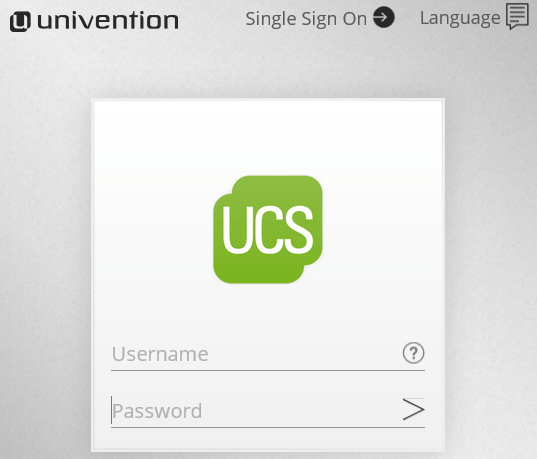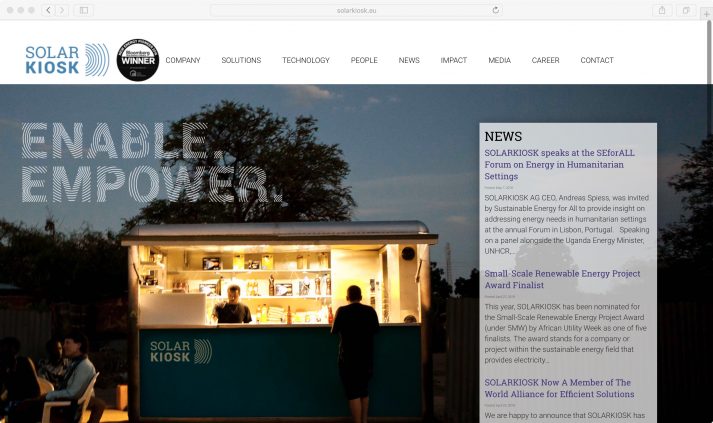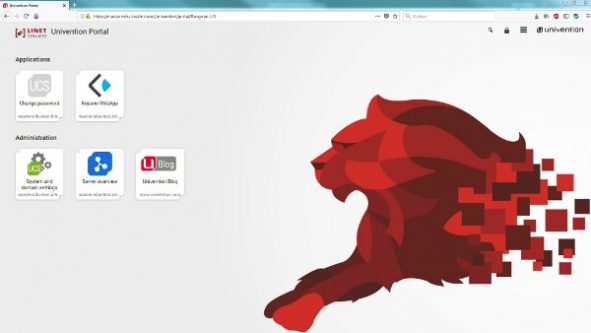From Practice
1 Password for All Services and Networks with Single Sign-on

Single Sign-on (SSO) is a process where your users authenticate themselves only once against the system and that’s it. They can then use a whole range of different programs, services, and cloud offerings without having to sign on personally each time again. Your users will love it. No more hassle with inventing and remembering numerous […]
Setup of a Collaborative Workspace for a Globally Operating Team with UCS as the Central IDM System

In this success story, you can find out how we set up a collaborative workspace for SOLARKIOSK AG, a company offering green energy services, high-quality products, and sustainable solutions all over the world. This workspace allows all members of the team to work and communicate with each other from anywhere and at any time – […]
Guide to Your Private UCS Server with ownCloud, Kopano & Let’s Encrypt

Have you ever thought?: “It’s enough! I finally want to set up my own robust, powerful server at home to put an end to the permanent threat that someone might hack my precious data.” I did! And today, I’d like to share with you here all the necessary steps that are required for this. In […]
Advantages of Roaming Profiles and Folder Redirection to Boost Network Performance + Data Availability

Would you like some valuable tips on how to increase network performance and user data availability when using Windows clients together with UCS? Thinking about user data, many of us admins immediately understand that questions about the issues of backups, privacy, and availability, no matter whether across different machines or outside the office, can create […]
UCS at the SchwuZ in Berlin, Part 2: Synchronizing User Profiles

We would like to inform you about further mile stones we achieved with our IT project at the Berlin-based cultural event organizer SchwuZ and therefore complement our last blog article bitpack.io modernizes IT at the SchwuZ in Berlin with Univention Corporate Server from last year with instructions on how to setup synchronized user profiles.
Central Domain Management with Samba and Active Directory

The release of UCS 4.3 also provides you with the Samba version 4.7 . Compared to older versions, it clearly improves the performance in the area of LDAP queries and replications of group memberships in particular. This offers great benefits, particularly for large organizations with several thousands or even ten thousands of authentication accounts. But […]
Brief Introduction: How Can UCS Systems Be Updated Automatically?

Like any operating system manufacturer, Univention usually publishes weekly updates. As an administrator, you want to install them as soon as possible. However, in large UCS environments with many connected servers, manual updates can take a lot of time, which is not always available every week. The easiest way to reduce such a big workload […]
Central IdM of Cloud to Minimize Risks with Users and Structures

When administrators think about user management (IdM), they often only keep an eye on traditional IT systems. But even in the cloud, where you can buy new services with just a few clicks, it’s extremely important for companies to keep control over their users if they do not want to lose control over who has […]
Customized Univention Portal Page in Just a Few Steps

The Univention Portal is the central hub via which users access a Univention system. It is where you can find links to installed applications like webmail. In addition, administrators also have the option of including their own links to external websites. Last, but by no means least, there is also a module here with which […]
Best use of LDAP in UCS: Schema Extensions for Adding Attributes & New Object Types

The LDAP server in UCS, like the Active Directory on a Windows server, stores all the information on your domain about all your resources from hardware to employee as objects, namely in a structured and well-defined manner. Every object has some defined attributes of a particular type. Common attributes of a user object are, for […]